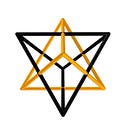A lot of my Asylum City planning is conveyed via Youtube, using a somewhat impressionistic style, some call it stream of consciousness. I’ll do some work in post production to illustrate my points, using the techniques of place based education.
I currently live in an area unofficially, yet affectiontionately, known as Asylum District, through which runs SE Hawthorne Boulevard, in Portland, Oregon. Dr. Hawthorne was a chief doctor for the state mental hospital, located a few miles west of my District headquarters.
The hinterlands around Portland feature lots of ranches, with horses, and lots of resorts. People who can afford the overhead of horses tend to congregate around Bend, Terrebonne, and Madras, Oregon. One of my recent Youtubes switches over to pictures of Smith Rock (see above), as I start unfolding my Quaker inspired DIY curriculum.
I imagine use staging an ongoing set of experimental lifestyles based on prototypes. That’s the Disney / EPCOT angle. Sometimes we have horses in the picture, which our students learn to care for, and maybe ride on occasion.
Probably by now you think I’m influenced by Westworld (the HBO series) and you would be…
